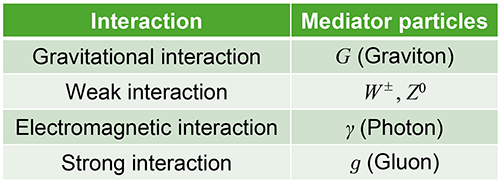Search for Higgs boson (2) – Fermiophobic Higgs –
The latest results of the Higgs particle search in the CDF experiment, conducted by our laboratory, have been released. For a general introduction to the Higgs particle, please refer to the High Energy Physics Laboratory News dated September 4, 2007. The reaction process we are focusing on is the production of Higgs particles through vector boson associated production (Wh) as shown in Figure 1, where the Higgs particle decays into WW. In the Standard Model of particle physics, the decay mode into WW becomes significant when the Higgs particle’s mass is MH > 130 GeV/c2. Additionally, we are examining this reaction process from different angles.
In the Standard Model, the Higgs particle is believed to interact with all particles and impart mass to them. Looking more closely at “all particles”, they can be broadly classified into spin-1/2 fermions (quarks, electrons, etc.), which are the fundamental particles of matter, and particles that mediate interactions (forces). There are four types of interactions in nature, each corresponding to a mediator particle, as shown in Table 1. Among these, only the W and Z particles, which mediate the weak interaction, have masses about 80 to 90 times that of a proton, while other mediator particles are massless. For example, the photon, which mediates electromagnetic interactions, is massless and is well-known for traveling at the speed of light. However, having mass for mediator particles leads to complications.
Using the well-established electromagnetic interaction as a foothold, it has been elucidated that there is an underlying mechanism behind the “existence of interactions”. This mechanism requires that the fundamental laws must satisfy a mathematical property called gauge symmetry, necessitating the existence of interactions. This mechanism exists for all three interactions other than gravity. However, when the particles that mediate interactions have mass, it becomes impossible to satisfy this gauge symmetry. To resolve this, the properties of the vacuum are modified, and these particles are not inherently massive but behave as if they acquire mass through specific vacuum properties. The Higgs particle plays a crucial role in modifying these vacuum properties. Therefore, the fundamental relationship between interactions and gauge symmetry dictates the way particles acquire mass through the Higgs particle.
Is it problematic for matter particles to have mass? From our everyday perspective, it might not seem like an issue, but it does cause problems in the context of weak interactions. The weak interaction distinguishes between the two spin states (right-handed and left-handed) of spin-1/2 fermions. When fermions acquire mass, these two states mix, which is undesirable for the weak interaction that seeks to distinguish between them. To solve this within the Standard Model, the Higgs particle is once again invoked. Initially, fermions are massless, and the right-handed and left-handed states are independent. However, they acquire mass through the Higgs particle, just like the W and Z particles. This efficiently resolves multiple issues simultaneously using the same Higgs particle. However, the fundamental question of why the weak interaction distinguishes between right-handed and left-handed states remains unanswered. Additionally, the exact mechanism of how fermions interact with the Higgs particle is not fully understood, requiring adjustments to match the observed mass values. Therefore, it remains unclear whether the mass of fermions is fundamentally problematic like the mass of the W and Z particles.
Thus, we are also exploring the possibility that the Higgs particle may not necessarily interact with fermions, conducting corresponding exploratory research. As shown in Figure 1, the Higgs particle does not interact with any fermions from its production to its decay. This type of Higgs particle is called a fermiophobic Higgs. Its production and decay processes differ significantly from those assumed in the Standard Model. For example, the process shown in Figure 2(a) would not occur. As Figure 3 shows, this process is the largest production process at the Tevatron in the Standard Model. In the case of a fermiophobic Higgs, vector boson associated production, which we focus on, could become the dominant process. As seen by comparing Figures 4 and 5, the decay mode h→bb disappears, and h → W+W− becomes dominant over a wide mass range. In our study, we select modes where W particles decay into two leptons (specifically, electron and electron neutrino pairs or muon and muon neutrino pairs), with the final state containing like-sign charges (Figure 1). This is advantageous for suppressing background events compared to opposite-sign charges.
The results released this time are based on the data analysis of 1.9 fb−1 proton-antiproton collision events, primarily conducted by our graduate student Takayuki Wakisaka. The number of expected events remaining after applying simple event selection criteria to distinguish between Higgs particle production/decay events and background events is 0.5 for a fermiophobic Higgs with a mass of 110 GeV/c2, compared to an estimated 3.2 background events, resulting in an S/N ratio of about 1/6. This is among the highest ratios in the challenging field of Higgs particle search. The actual data showed 3 remaining events, consistent with the expected background events. Although this does not provide evidence for Higgs particle production, it allows us to calculate an upper limit on the Higgs particle production cross-section, as shown in Figure 6. The theoretical predictions are also shown as curves in the figure. Since these predictions are lower than the experimental upper limits, there is no contradiction, and the theory is not constrained. This analysis emphasized understanding background events and Higgs particle detection efficiency, which are fundamental but not easy, rather than optimizing the selection criteria in a high-dimensional analysis. Despite using relatively simple analytical methods, we achieved a relatively high S/N ratio, demonstrating the high potential of our search capability. As data collection at the Tevatron continues, we are working to further improve our analytical methods to get closer to discovery.







